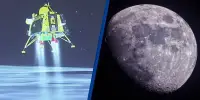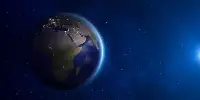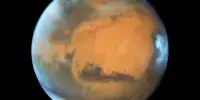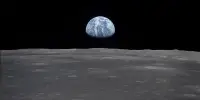Scientists have long been perplexed about how our solar system’s planets formed because it is not a process that can be observed. Researchers have generally assumed that Jupiter and Saturn formed from collisions of smaller clumps of rock and ice, resulting in the formation of proto-planets known as planetesimals. However, the current model produced far too many. A new computer model developed by scientists discovered a way for these massive wonders to form from collections of pebbles.
A new study led by Carnegie’s Matt Clement reveals the probable origins of Saturn and Jupiter. These discoveries add to our understanding of the forces that shaped our Solar System’s unusual architecture, such as the ejection of a planet between Saturn and Uranus, which ensured that only small, rocky planets like Earth formed inward of Jupiter.
Our Sun was once surrounded by a rotating disk of gas and dust, from which the planets formed. The orbits of newly formed planets were thought to be close-packed and circular at first, but gravitational interactions between larger objects disrupted the arrangement and caused the baby giant planets to rapidly reshuffle, resulting in the current configuration.
We now know that our Milky Way galaxy alone contains thousands of planetary systems. However, because the arrangement of planets in our Solar System is highly unusual, we are using models to reverse engineer and replicate its formative processes.
Matt Clement
“We now know that our Milky Way galaxy alone contains thousands of planetary systems,” Clement said. “However, because the arrangement of planets in our Solar System is highly unusual, we are using models to reverse engineer and replicate its formative processes. This is analogous to trying to figure out what happened in a car accident after the fact — how fast the cars were going, in which directions, and so on.”
Clement and his co-authors — Carnegie’s John Chambers, Sean Raymond of the University of Bordeaux, Nathan Kaib of University of Oklahoma, Rogerio Deienno of the Southwest Research Institute, and André Izidoro of Rice University — conducted 6,000 simulations of our Solar System’s evolution, revealing an unexpected detail about Jupiter and Saturn’s original relationship.
Jupiter in its infancy was thought to orbit the Sun three times for every two orbits that Saturn completed. But this arrangement is not able to satisfactorily explain the configuration of the giant planets that we see today. The team’s models showed that a ratio of two Jupiter orbits to one Saturnian orbit more consistently produced results that look like our familiar planetary architecture.

“This shows that, while our Solar System is an outlier, it wasn’t always that way,” said Clement, who is presenting the team’s findings today at the American Astronomical Society’s Division for Planetary Sciences virtual meeting. “Moreover, now that we’ve established the model’s effectiveness, we can use it to help us look at the formation of terrestrial planets, including our own, and to possibly inform our ability to look for similar systems elsewhere that may have the potential to host life.”
The model also revealed that the mass of the Kuiper belt — an icy region on the Solar System’s outskirts composed of dwarf planets and planetoids, of which Pluto is the largest member — and an ice giant planet kicked out in the Solar System’s infancy shaped Uranus and Neptune’s positions.
The discovery is far from the last word on the formation of solar systems. For one thing, it does not account for the inner planets. Simulating the formation of the inner planets is much more difficult because they took longer to form, so simulations must span longer time periods. The inner solar system also packs more objects into a smaller space, causing those objects to move faster around their orbits. Both of these reasons mean simulations require far more resolution elements than the outer planet models use.
Levison’s team intends to investigate how the inner solar system might have formed in a “pebble accretion” model. If this theory can also reproduce the formation of the four inner planets, planetary scientists will be one step closer to understanding how planets formed and it would be a triumph of the interaction of computer simulations and the pebble accretion model.
















